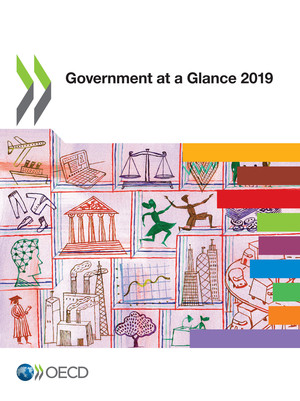copy the linklink copied! Revenue and expenditure structure by level of government
Government is composed of various levels (central, state and local) with different abilities to collect revenues. The ability of sub-central levels to collect revenues depends on the degree of fiscal federalism. In countries where sub-central levels have limited abilities to collect taxes, their main source of revenues comes from central government transfers.
Recent OECD research has found that decentralising government spending and revenue collection tends to boost economic growth when both are decentralised to a similar extent and for economies that have a relatively higher level of integration to global markets. Even though decentralisation yields positive gains in terms of efficiency, the effects on equity vary from country to country (Kim and Dougherty, 2018).
There are differences across OECD countries in terms of revenue decentralisation. On average, the central government raises the largest proportion (52.9%). In Ireland (95.0%), the United Kingdom (91.6%), New Zealand (89.2%), Norway (83.8%) and Estonia (81.3%), the central government raises over 80% of revenues. In Germany, a federal country, this proportion drops to 28.0% and social security contributions stand as the largest share of revenues instead. In France, social security represents 47.2% of the revenues (the highest share among OECD countries) and the central level raises 36.9%. Although, on average, the local level raises the smallest share across OECD countries (10.5%), in the case of Korea (33.9%) and Sweden (33.3%) it represents about a third of the revenues.
It is expected that in federal countries, sub-central levels will have higher fiscal autonomy. Still, variation exists in how much is raised by each level. In Canada, the state level (i.e. provinces) raise more revenues than the central level (44.0% versus 35.6%). While the Canadian federal government collects all taxes, provinces can set their own taxes. In the United States and Australia, states raise around 40% of the revenues. On the other hand, in Austria states raise 3.9% and the local level 6.3% of revenues.
Expenditures vary largely across levels of government as well. The central government spends 41% of the general government expenditures on average in OECD countries. In line with raising revenues, in Ireland, New Zealand and the United Kingdom, the central government spends the largest share (91.5%, 88.3% and 76.7% respectively). Social security spends the most in Japan (49.7%), France (45.1%) and Germany (43.4%). In Denmark, although the central government collects the largest portion, the local level spends 64%. A similar pattern is observed in Sweden (local level spends 50.5%) and Finland (39.6%). In Canada and Switzerland, the canton/province level spends the most of overall government expenditures (47.1% and 37.0% respectively).
Revenues and expenditures data are derived from the OECD National Accounts Statistics (database), which are based on the System of National Accounts (SNA), a set of internationally agreed standards for national accounting. The 2008 SNA framework has been implemented by all OECD countries (see Annex A for details). In SNA terminology, general government consists of central, state and local governments, and social security funds. State government only applies to the nine OECD countries that are federal states: Australia, Austria, Belgium, Canada, Germany, Mexico, Spain (deemed a quasi-federal country), Switzerland and the United States. Data excludes transfers between levels of government except in Australia, Korea, Turkey, Costa Rica and Indonesia. This is in order to see the contribution of each sub-sector in general government total revenues and expenditures, which are at this level consolidated.
Revenues include taxes (e.g. on consumption, income, wealth), net social contributions (e.g. contributions for pensions, health and social security), sales of goods and services (e.g. market output of establishments in government) and grants and other revenues (e.g. current and capital grants, property income and subsidies). The aggregates were constructed using sub-account line items (see Annex B). Expenditures encompass intermediate consumption, compensation of employees, subsidies, property income (mainly interest spending), social benefits, other current expenditures (mainly current transfers) and capital expenditures (i.e. capital transfers and investments).
Further reading
Kim, J. and S. Dougherty (eds.) (2018), Fiscal Decentralisation and Inclusive Growth, OECD Fiscal Federalism Studies, OECD publishing, Paris/KIPF, Seoul. https://doi.org/10.1787/9789264302488-en.
Figure notes
Local government is included in state government for Australia and the United States
Australia does not operate government social insurance schemes. Social security funds are included in central government in Ireland, New Zealand, Norway, the United Kingdom and the United States.
Data for Chile are not available. On data for Israel, see https://doi.org/10.1787/888932315602. For Japan data for sub-sectors of general government refer to the fiscal year. Data for Turkey are not included in the OECD average due to missing time-series.
Data for Indonesia: 2016 rather than 2017
2.45 and 2.46. (Changes on revenue collection and expenditure by levels of government from 2007 to 2017) are available online in Annex F.
Metadata, Legal and Rights
https://doi.org/10.1787/8ccf5c38-en
© OECD 2019
The use of this work, whether digital or print, is governed by the Terms and Conditions to be found at http://www.oecd.org/termsandconditions.




